Components
Rangers
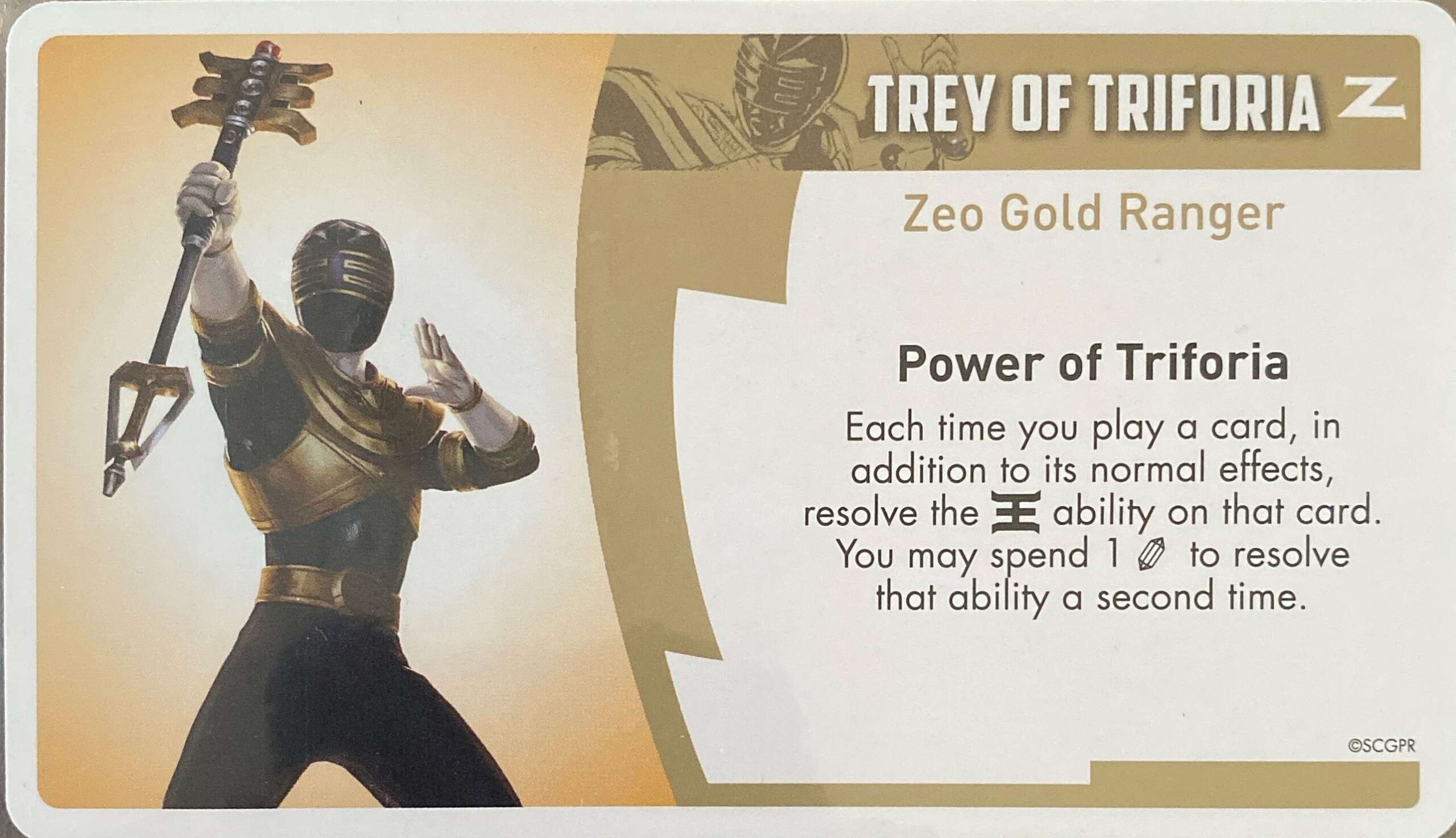
Character Cards
Each character card is associated with a different Ranger. Every Ranger has a special ability that is written on the card.
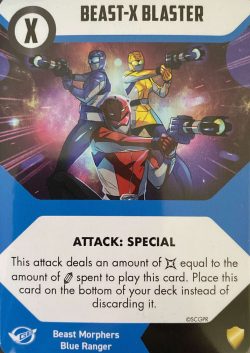
Combat Cards
Every Ranger comes with a 10-card combat deck. This deck acts as both your Offense and Defense when fighting evil doers. Learn about the different parts of Combat Cards here.
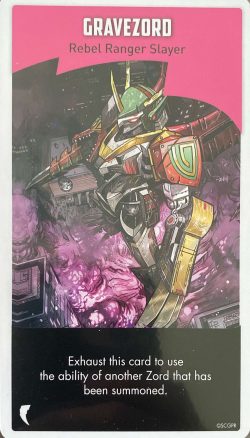
Zord Cards
Every Ranger comes with an associated Zord card. Each one has a unique effect that is written on the card. Zord cards can be used only once per round. Upon earning a new Zord, place the card in front of the appropriate Ranger (or choose if the Ranger is not in the game).
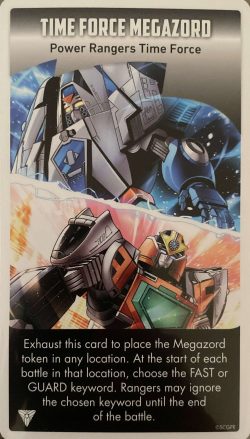
Megazord Cards
Megazord cards may look the same as Zord cards, but they do function fairly differently. A megazord may only be obtained after earning all other Zords in the Zord stack. Megazords come with powerful abilities that can be used by any Ranger. These abilites are written on the card itself.

Arsenal Cards
Arsenal Cards are powerful tools that Rangers can obtain and use throughout the game. Learn more about the types of Arsenal Cards, and how they function, here.
Enemies
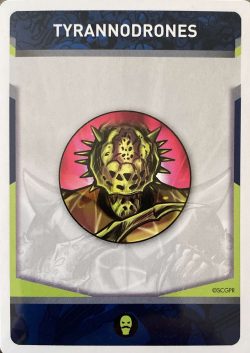
Deployment Cards
Deployment cards determine where the various villains will go on the game board. Foot Soldiers have multiple deployment cards while Monsters, Nemeses and Bosses only have 1 for each individual enemy. Learn more about Deployment Cards here.
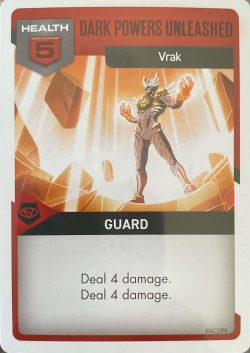
Enemy Cards
These cards form an enemy’s deck, and are used when enemies engage in battle with the Rangers. They contain a variety of attacks and/or effects used to try and defeat the players. Enemies can only use enemy cards that are directly associated with them. For example, a Putty Patroller cannot use Super Putty Patroller cards as they both have separate decks assigned to them. Learn more about Enemy Cards here.
Boards
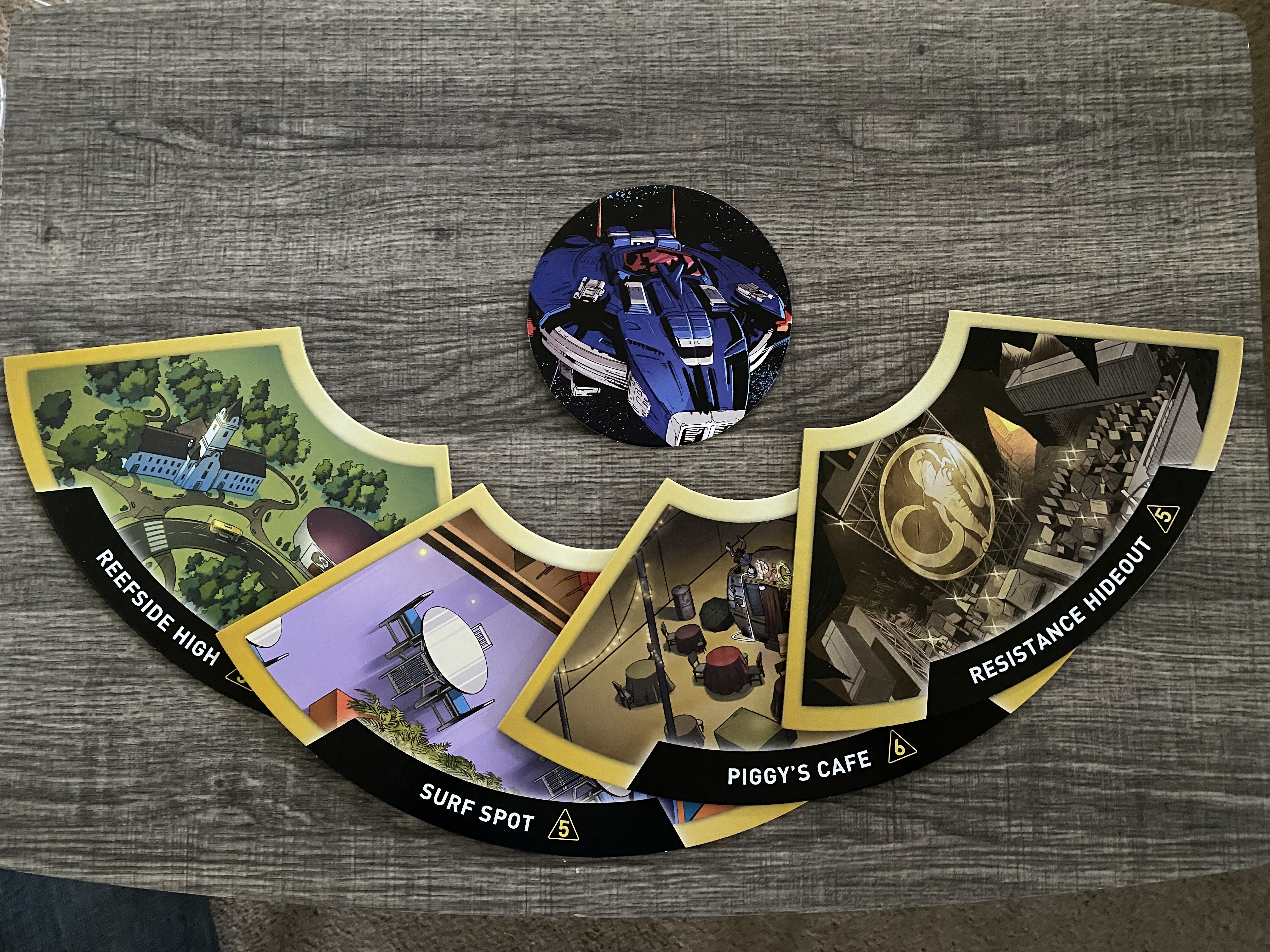
Location Boards
Each game will consist of 5 location boards. These location boards will be divided into 4 Outer locations, and 1 Inner Location. All location boards have 2 sides. Side “A” has the location name and figure limit. Side “B”, however, has additional location effects that are unique for each area. Side “B” of a Command Center represents a new mode call “Command Center Assault.”
Each Outer Location corresponds with a specific Foot Soldier, which you can learn about here.
Each Inner Location is based on the headquarters of a Ranger team. As such, each one has a different ability to help the Rangers. Learn what each Inner Location does here.

Figures
These figures represent the many different heroes and villains found throughout the Ranger mythos. Figures are split into 4 main categories: Rangers, Foot Soldiers, Monsters/Nemeses and Bosses. They are placed in various places on the board as the game proceeds.
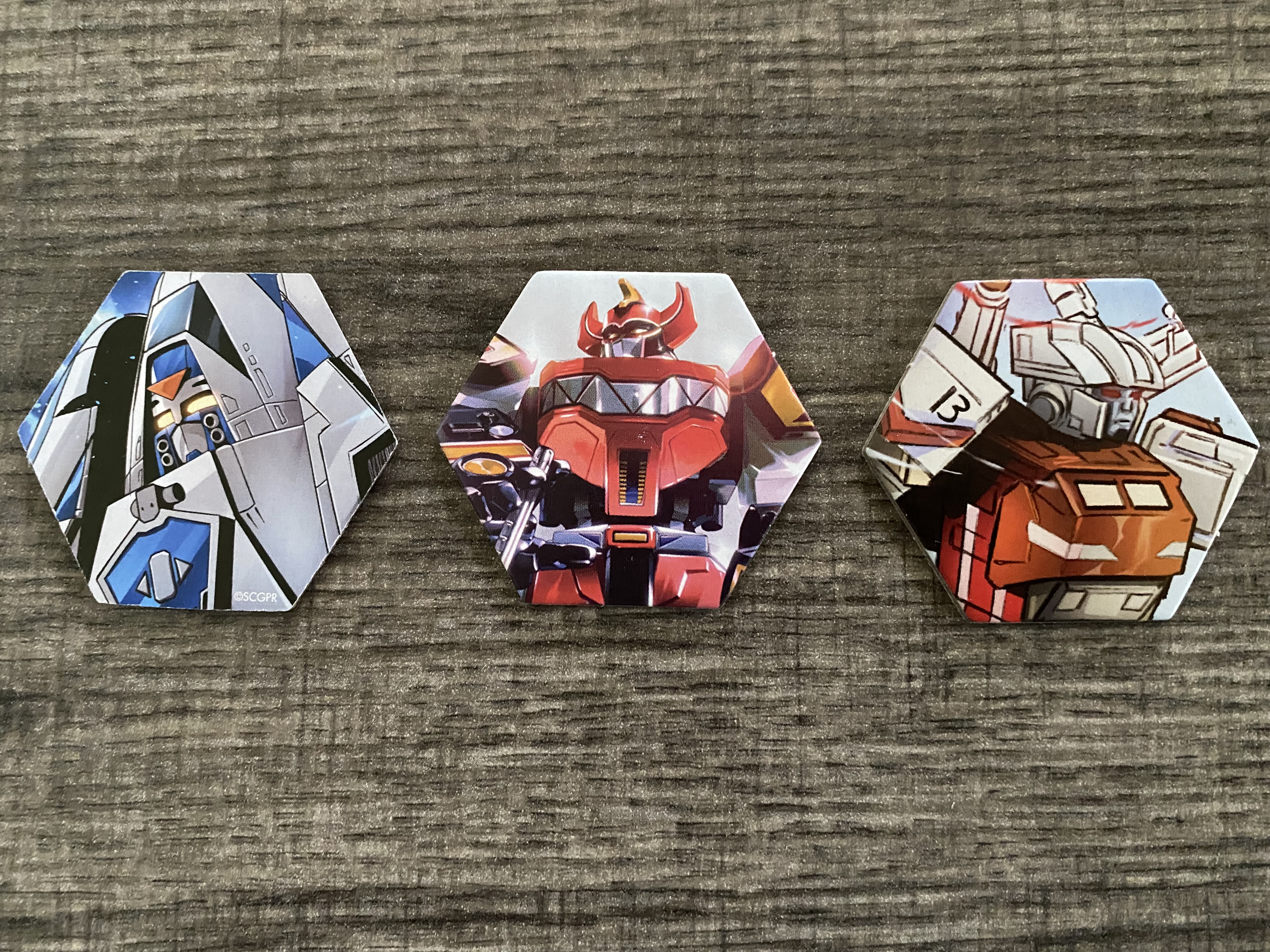
Megazord Tokens
These tokens represent the Megazord. After it has been summoned, the Megazord token will be placed in the appropriate area on the board based on the effect stated on the Megazord card.
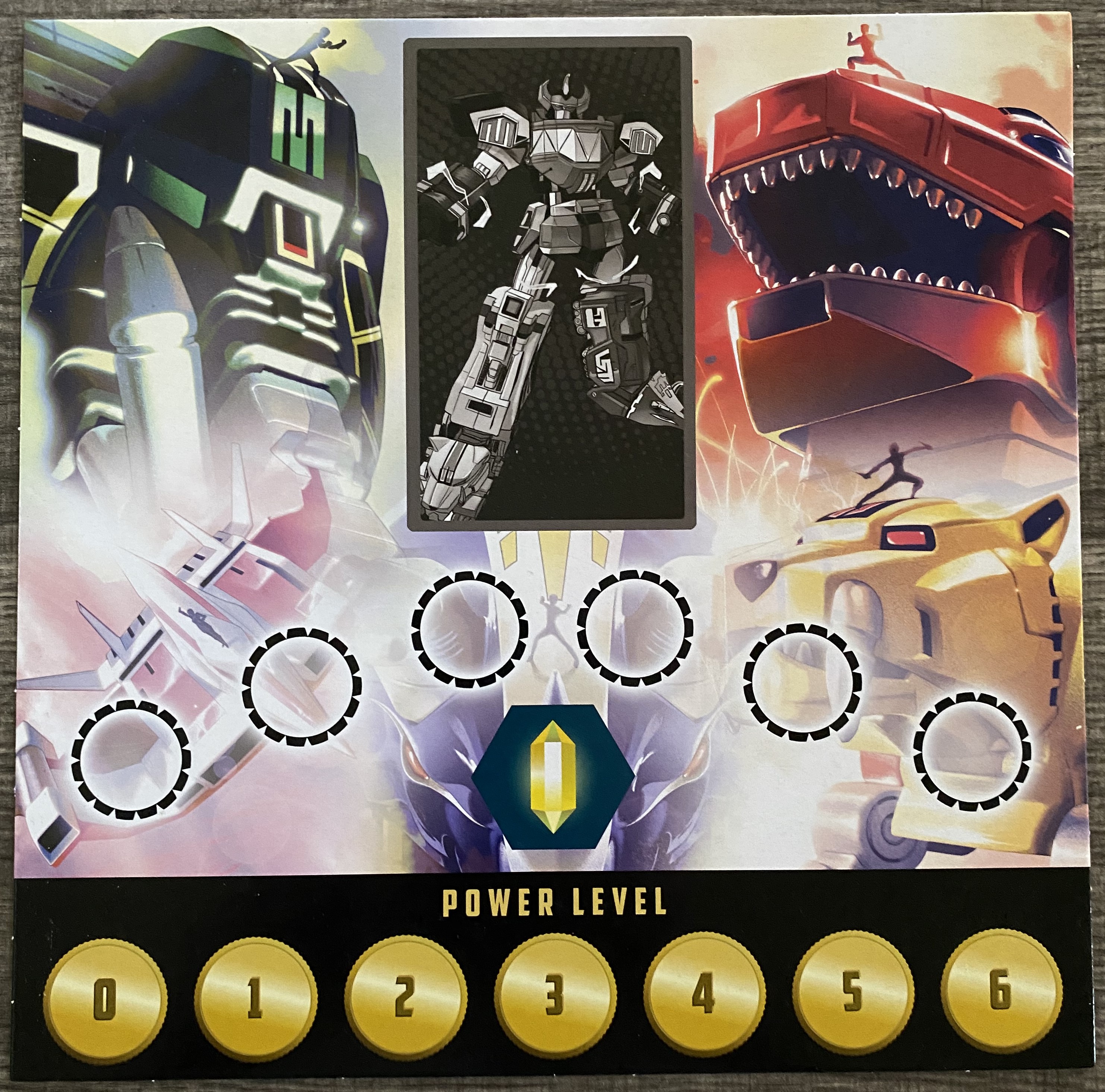
Power Board
The Power Board is used to help keep track of obtaining Zords. The Zord cards (and Megazord card) are placed here. As enemies are defeated, the “Experience Tracker” moves up. Upon filling the Experience Tracker, the “Power Track” level on the bottom of the board increases, by 1, a Zord card is obtained, and enemy figures are removed from the Experience Tracker.
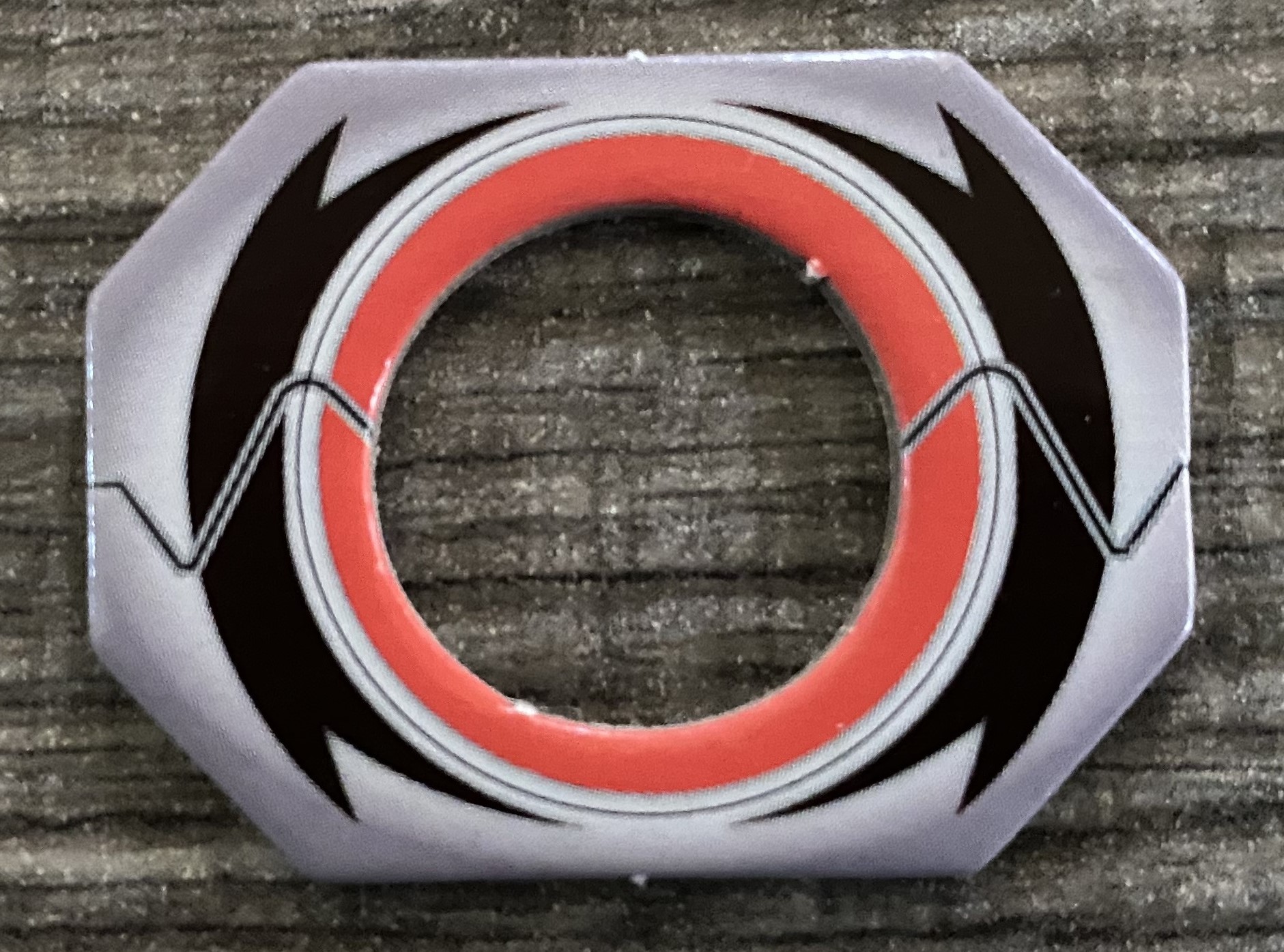
Power Marker
Used to help keep track of what level the Power Track is. When the Experience Tracker is filled, move the Power Marker up 1 level. After a Megazord has been obtained, then the power board is no longer used.
Supplies
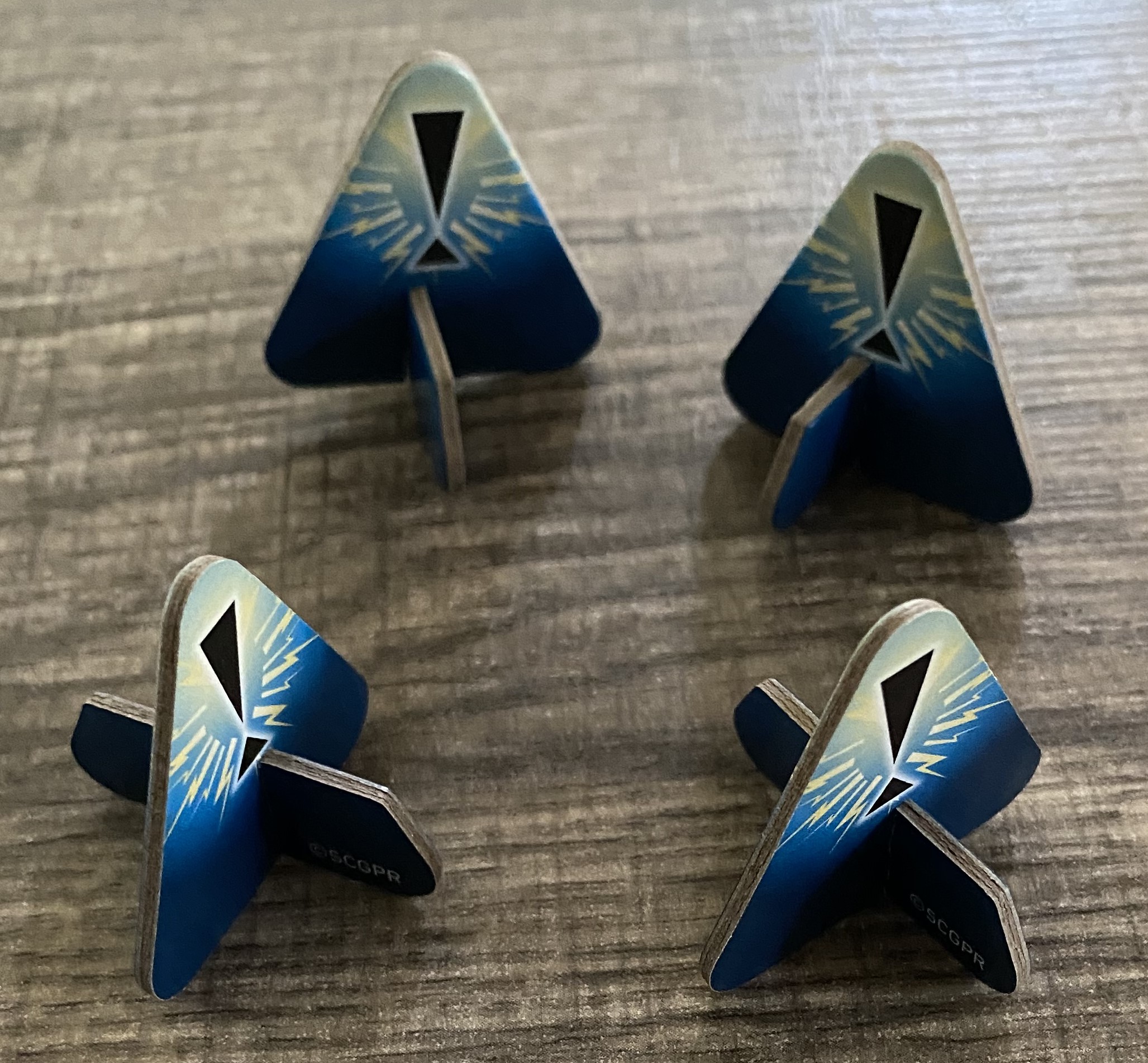
Panic Tokens
When a location on the board has either reached it’s figure limit, or a monster/nemesis or boss is deployed to that location, then the area is now panicked. Place a panic token on the area to represent it’s panicked state. When the area becomes unpanicked, remove the panic token. If all 4 locations become panicked, then the rangers lose.
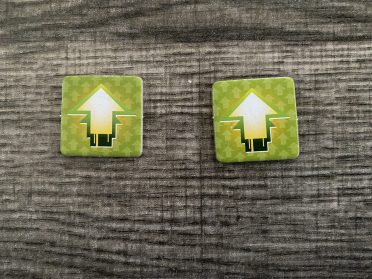
Action Tokens
These tokens determine how many different actions a Ranger can take. There are many different actions that can be performed by flipping an action token face down such as moving Rangers, and initiating combat. Once used, an action token cannot be used again until the next action phase. Learn more about how Action Tokens work here.
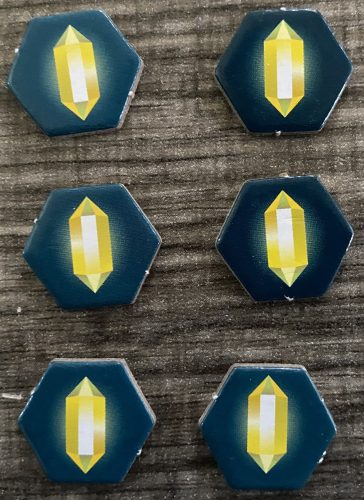
Energy Tokens
Energy tokens are primarily used to represent the amount of energy that Rangers have to play their combat cards. A few energy tokens, however, will be placed in the center location, and represent the amount of remaining “lives” that the rangers have. If a Ranger is defeated, and there are no energy tokens left in the center, then the Rangers lose.
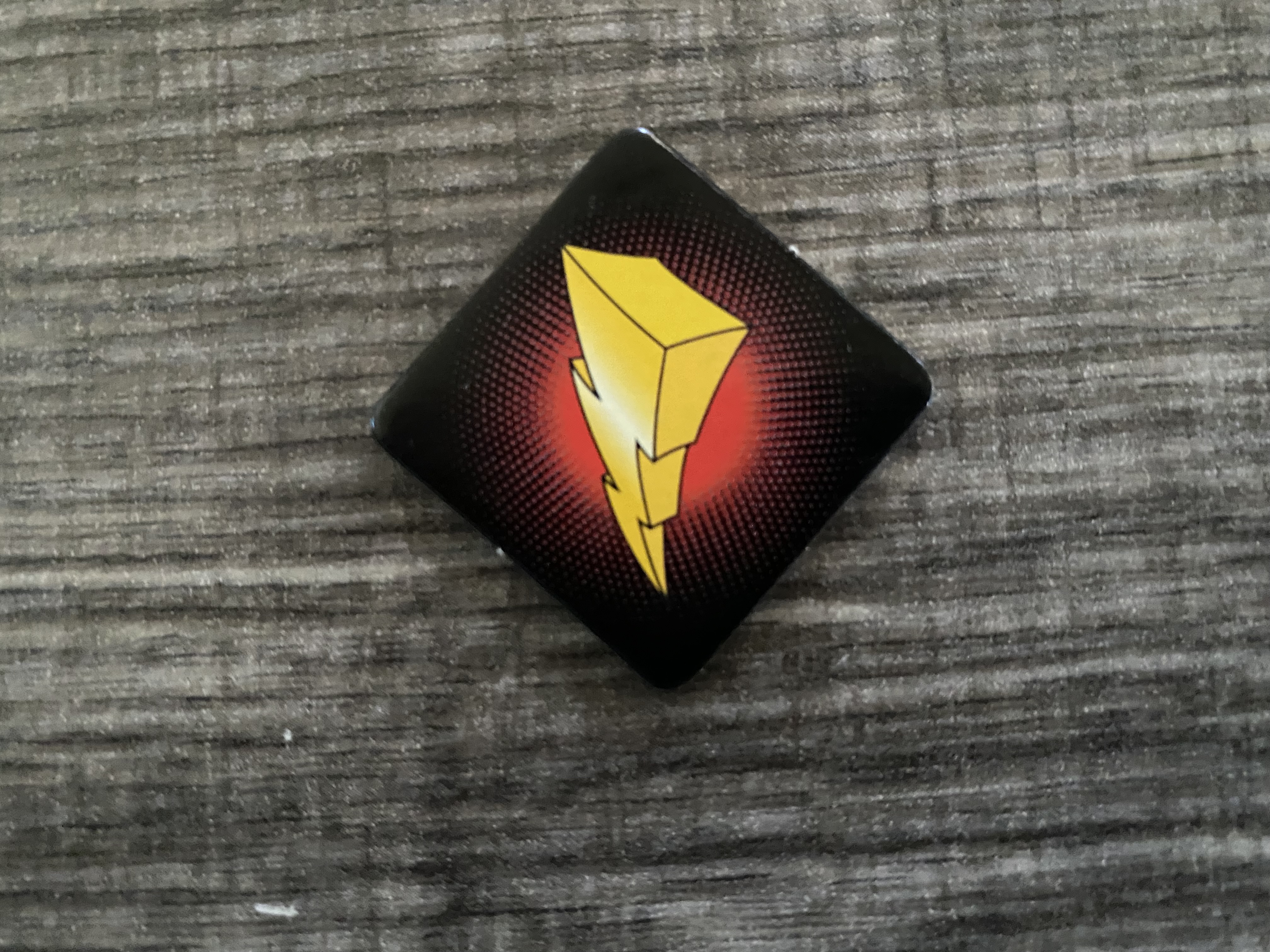
Lead Ranger Token
This token is given to the Ranger who initiated combat. They are considered the “Lead Ranger.” Any effects that mention the Lead Ranger will only affect the Ranger who has this token.
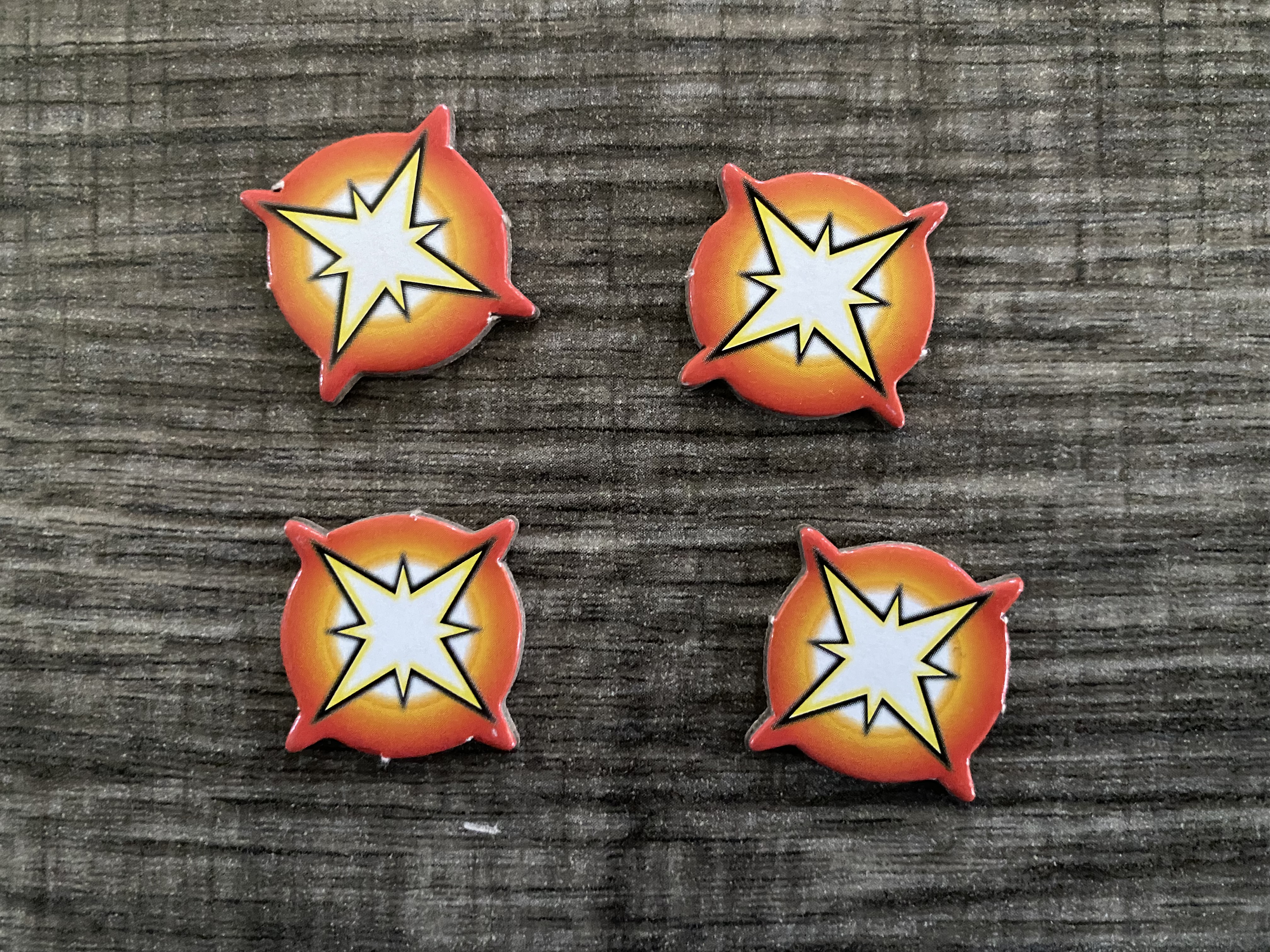
Hit Tokens
These tokens represent the amount of damage an enemy has taken. If the number of hit tokens matches, or exceeds, the health of the enemy card, then that enemy card if flipped face down and considered defeated.
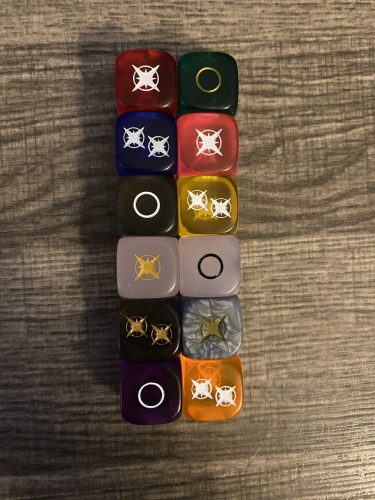
Combat Dice
These 6-sided dice are used primarily during battles to deal damage to enemies. Each die has 3 hit sides, 2 miss sides, and 1 critical hit side.